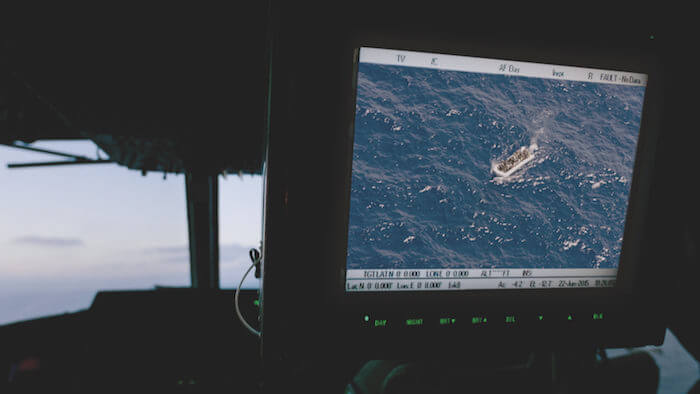#NYFF 2016: Fire at Sea


In Gianfranco Rosi’s Fire at Sea, the European refugee crisis intersects painfully and obliquely with the sleepy Sicilian island of Lampedusa, where coastal rescue teams haul dead and near-dead bodies from inadequately supplied boats while on land native grammar school kids hunt birds with slingshots. Fire at Sea possesses what might be characterized as a “poetic documentary” style: voiceover narration and talking-head interviews are mostly eschewed for scenes of Lampedusan life that alternate between the moving and the mundane. The footage sometimes speaks for itself and sometimes challenges viewers to make sense of disparate, seemingly tangentially related information—the result is a portrait of social and geopolitical upheaval in the most direct and simultaneously most inscrutable terms.
Throughout, Rosi compares the day-to-day activities of a young boy named Samuele and his family to African refugees arriving on the Mediterranean coast. Samuele attends school, blows up cacti with firecrackers, learns from his fisherman uncle how to overcome seasickness, and wears a patch in order to strengthen a lazy eye. His doctor is one of the film’s few interviewees, testifying to the horrors he’s witnessed attending to refugees—those who make it through the watery trek often suffer dehydration, emaciation, and burning—or else autopsying them.
The refugees themselves are less individuated. In Fire at Sea’s most powerful moment, several African men engage in a celebratory yet solemn group prayer, with Rosi concentrating on one man who recites in an almost biblical litany the ordeals of his people: “On the journey on the sea too many passengers died. They got lost in the sea. A boat was carrying 90 passengers. Only 30 were rescued and the rest died. Today we are alive.” Largely, however, the refugees are depicted as a teeming mass, whether vetted by immigration security or playing street soccer, with teams divided by country of origin. Rosi spends more one-on-one time with an Italian radio host and Samuele’s grandmother Maria, the latter requesting the former to play songs that speak to her past and present domestic life.
Considering his choice of focus, Rosi could be charged with generalizing the plight of the refugees, avoiding any large-scale description or explanation of the crisis, and failing to investigate the interaction between migrants and the Lampedusan population. Indeed, Fire’s greatest strength—its rich nighttime and underwater cinematography, which contrasts the dreaminess of one man’s scuba diving expeditions with the nightmarish quality of pre-dawn refugee rescues—also aestheticizes the film’s subjects at the expense of broader analysis. And yet Rosi has risked such outcomes so that his footage may resonate in other ways. Fire works best as a ground-level, and not bird’s-eye, view of a land upon which play out narratives tragic, heroic, terrifying, miraculous, and also quotidian, these strands occasionally crossing and occasionally passing each other by. With this unique, unsettling film, Rosi suggests that historical phenomena should be seen in both disturbing and desultory detail—the director opens up to his audience questions about the close coexistence of survival and the everyday rather than providing any prefabricated answers.
You might also like 




















